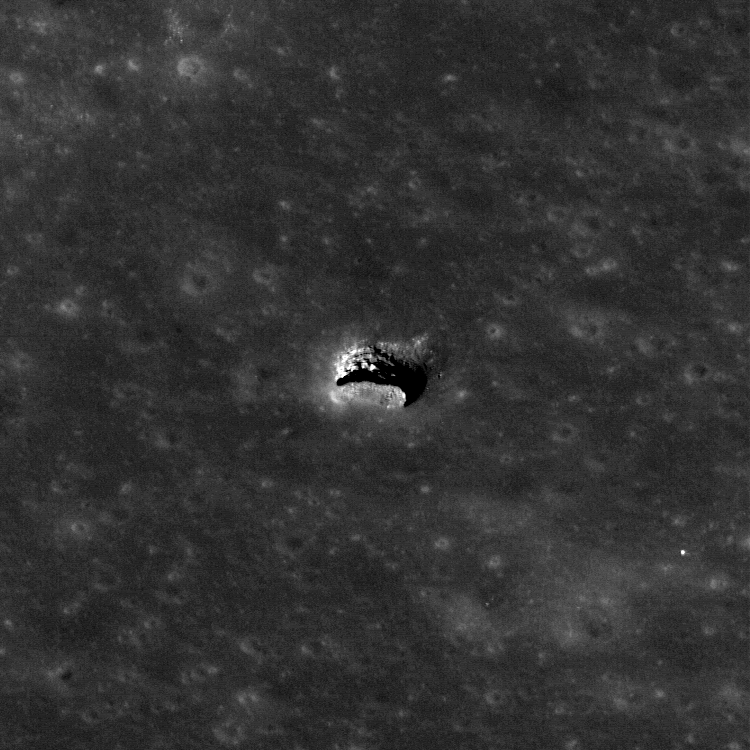
Since LRO completes a full cycle of lunar imaging each month, it is possible to follow up previous discoveries and re-image targets under different lighting conditions. The LROC team waited patiently until the Sun and orbit position in the Marius Hills region was such that the bottom of the previously imaged pit wall was illuminated at just the right angle so that if there was an open lava tube extending horizontally its floor would be illuminated. The spacecraft slewed 43° to the east and the solar incidence angle was 34° from vertical.
In this geometry, the NAC was able to image a few meters under the overhang discovering a sublunarean void! Will astronauts someday explore under the mare? What scientific riches wait to be discovered within the unseen reaches of sublunarean voids?
Also note how the oblique angle really brings out the layered nature of the mare bedrock in the pit walls. These exposed layers give scientists important clues as to how the vast mare were deposited.
Explore the entire oblique image! Read the 2011 Lunar and Planetary Science Conference abstract describing details of this fascinating discovery.
Also check out previous Featured Images of the Mare Tranquillitatis pit and the Mare Ingenii pit.
Published by Mark Robinson on 7 February 2011
